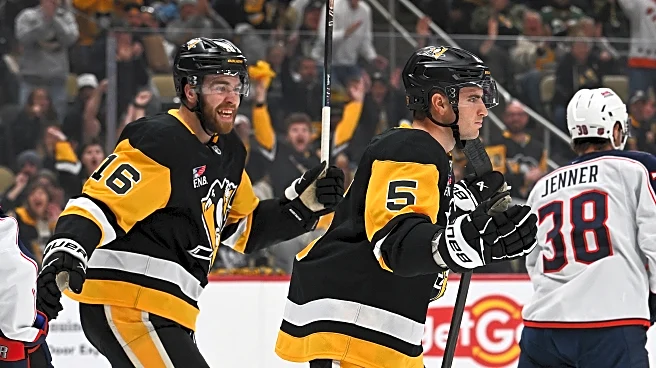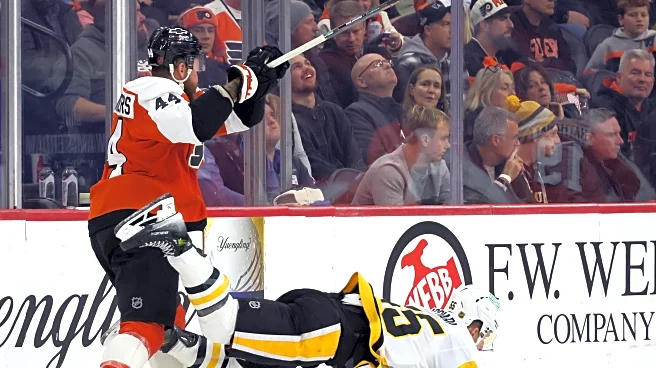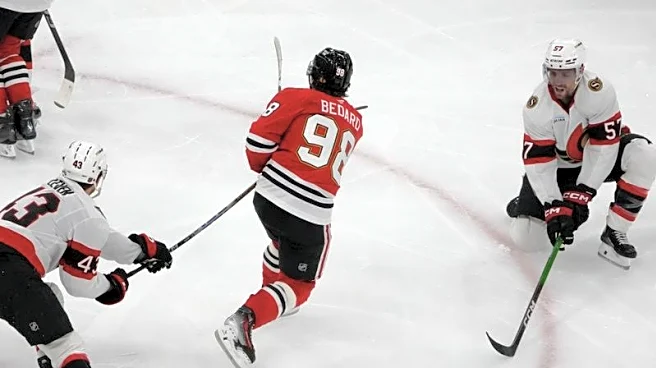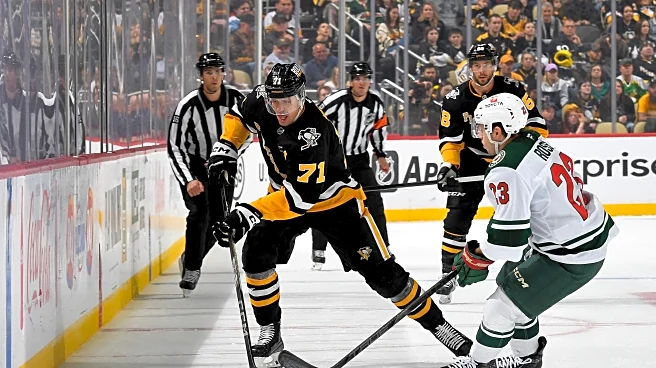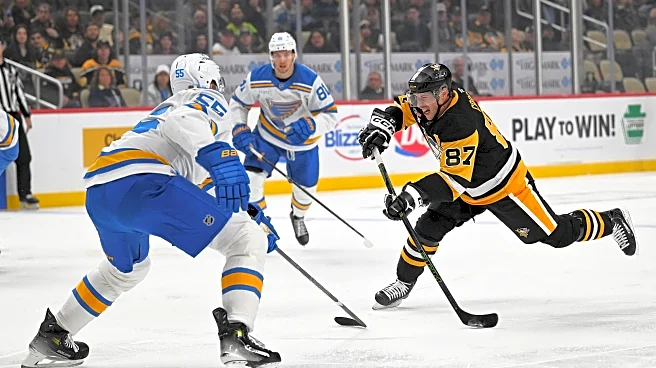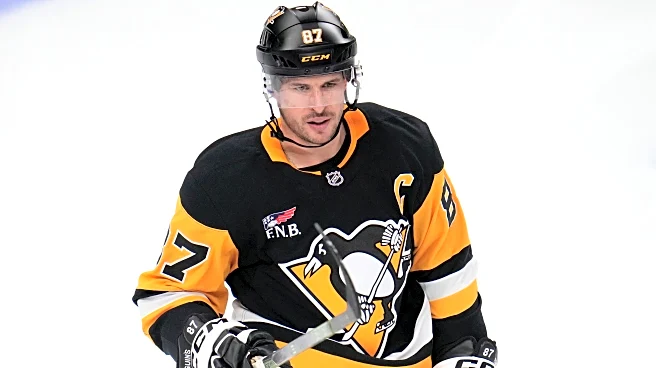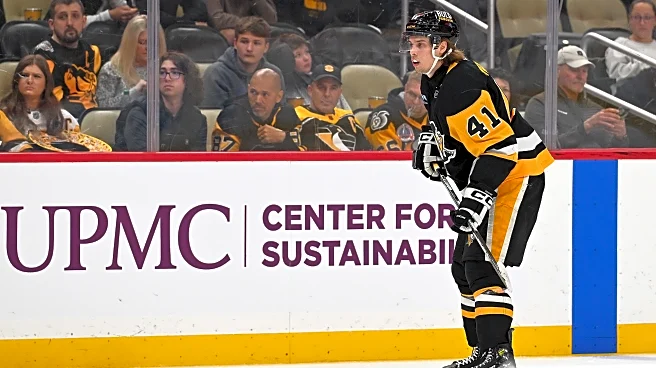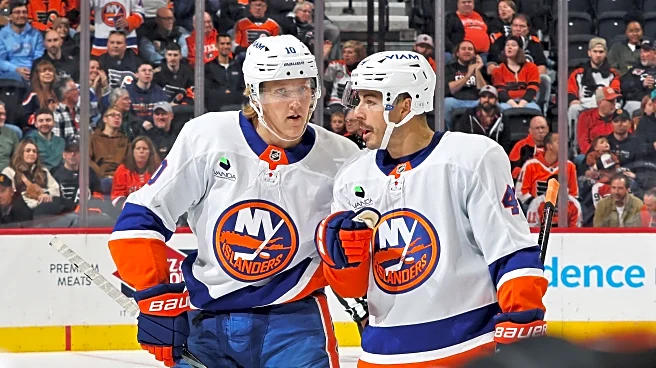On a team full of early season surprises, there might not be a bigger individual surprise than the play of Pittsburgh Penguins forward Justin Brazeau.
Entering play on Thursday, the Penguins’ 12th game
of the season, Brazeau is second on the team with six goals, third with 12 total points, and along with fellow free agent addition Anthony Mantha has helped form a physically imposing second line around Evgeni Malkin that has, at times, downright bullied their way to goals.
The Penguins talked a lot this offseason about needing to get bigger, and they certainly achieved that with the 6-6, 232-pound Brazeau and the 6-5, 240-pound Mantha. Of course, just adding size for the sake of adding size is not exactly a winning formula. You also need to have some talent and production to go along with that size to make it meaningful. It is hard to argue with the early results from both players, especially as they have performed alongside a suddenly rejuvenated Malkin.
But while Malkin is one of the best players in the history of the sport, and Mantha has had extended stretches of being a legitimate top-six NHL forward in his career, Brazeau’s early success is the one that has really come out of nowhere.
When the Penguins signed him to a two-year, $3 million contract over the summer you probably only gave it a passing glance and viewed it as potential bottom-six fodder for a possible lottery team.
What else are you supposed to think about a 27-year-old forward that entered the season with 16 goals in 95 NHL games? It’s not exactly somebody you are expecting to fill a top-six role or stand out in a meaningful way.
Then he came out on opening night and not only scored the first goal of the Penguins’ season, he did so by displaying smooth hands and undressing one of the best goalies in the world.
Then he simply has not stopped scoring.
It is not like he is scoring garbage goals around the net and having Malkin fire shots in off of his body for goals, either. This is not a Michael Bunting situation here. He has earned a lot of these goals and displayed some surprisingly strong puck skills on some of his other goals, and some plays that did not result in goals.
The skill has stood out just as much as the size and power.
But maybe the skill shouldn’t be all that surprising, because it’s not like he has not had success at the lower levels offensively.
It has just always taken him some time to figure out each level before he really starts to shine.
In his last year in the OHL he scored 61 goals and had 113 points (yes, he was overage for the level, but he still scored — a lot). He scored 39 goals the year before and continued a consistently upward trajectory offensively. And that’s really been his calling card at every level.
Slow start. Gradual improvement. And then eventually figuring it all out and becoming a productive player for the level. Whether it was in juniors, the AHL or apparently now the NHL it is usually around year three where the offense starts to catch up with everything else.
While he has not generally been associated with offense, the Maple Leafs were still extremely high on his talent when they originally signed him for the 2019-20 season, and everybody associated with coaching him just raved about his combination of size and skill.
It’s not like recent hockey history hasn’t seen similar players, with similar builds, follow similar paths and start to blossom as NHL players in their mid-20s.
Mason Marchment did not start playing Major Junior hockey until he was 19 years old, did not get drafted, did not play his first NHL game until he was 24 and entering his age 26 season had scored just two NHL goals in 37 games. Now he is a legitimate 20-goal, middle-six winger.
Johan Franzen had a similar combination of size and skill, and while he was a third-round draft pick, did not actually make it over to the NHL until he was 26 years, and by age 28 had only scored 22 goals in 149 NHL games. Then by year three he was at times a physical freak. Think back to those 2008 and 2009 Stanley Cup Finals and how much you hated him.
Chris Kunitz did not have quite the size of Brazeau, Marchment or Franzen, but still played a similar power-forward game and had to work his way up as an undrafted player that did not get his first real look until he was in his mid-20s. We know what he did in the NHL.
Now, I’m not suggesting that Brazeau is going to turn into Johan Franzen, or even Mason Marchment. And for every Franzen and Marchment success story, there are probably 25 similar stories that did not end the same way. I am just saying it would not be a completely unheard of path.
And Brazeau’s early play is at least making it seem possible that he could follow that path.
The biggest red flags with his early success are the simple fact he IS playing next to a Hall of Famer and he IS currently scoring on 28.6 percent of his shots. The former point is helpful, and the latter point is just not going to continue. But it’s not like he was a low-percentage shooter during his first two years in the league. He entered this season having scored on 13.3 percent of his shots. A very fair, solid number.
He is currently averaging 1.9 shots on goal per game.
Let’s just, for laughs, say he maintains that shot on goal pace over the next 71 games. That is an additional 133 shots on goal.
- If he scored on just 8 percent of those shots that’s still an additional 10 goals this season and gets him to 16 for the season. That would also only be a 10.5 percent shooting percentage for the season as a whole, a drop from what he did his previous two years.
- If he scored on just 10 percent of those shots, that is an additional 13 goals and gets him almost to the 20-goal mark for the season.
- If he scored on his career average pace (13.3 percent) that is an additional 17 goals.
So even with some expected shooting expected shooting percentage regression the rest of the way, he is still in a good position to have a strong season offensively. That is what the good start has done for him.
There are also some encouraging signs from an underlying numbers standpoint. He is not only scoring goals, he is getting chances. Among 288 forwards that have logged at least 100 minutes of 5-on-5 ice-time this season, Brazeau currently ranks sixth in individual high-danger scoring chances per 60 minutes (7.46 per 60 minutes) and 11th in individual expected goals per 60 minutes (1.41 per 60 minutes).
Perhaps that is a reflection of playing alongside Malkin, and/or being put into a lot of favorable offensive situations (which that line certainly is, more than any other Penguins line at this point). The bottom line, however, is that he is in good positions to score, and he is.
His strong underlying numbers in those areas are not exactly new this season, either. Over the first two years of his career in Boston and Minnesota he still produced individual high-danger chances and individual expected goals at an above average rate. Among 458 forwards with at least 500 minutes of 5-on-5 ice-time, he ranked 162nd (individual expected goals) and 107th (individual high-danger chances). That is comfortably in the top half of the league in both areas.
I do not know what the rest of Brazeau’s season, or his long-term future, is going to look like, but he has definitely become one of the more intriguing players on this roster and one that is worth watching. And when you dig down a little deeper into his career, the way he plays, and what his on-ice process has actually been there is some reason for cautious optimism.
It is not just the young prospects coming through your organization that are important to develop for long-term success. Sometimes you have to stumble upon some hidden gems as well. Especially when they cost you little against the salary cap and come with minimal risk.
